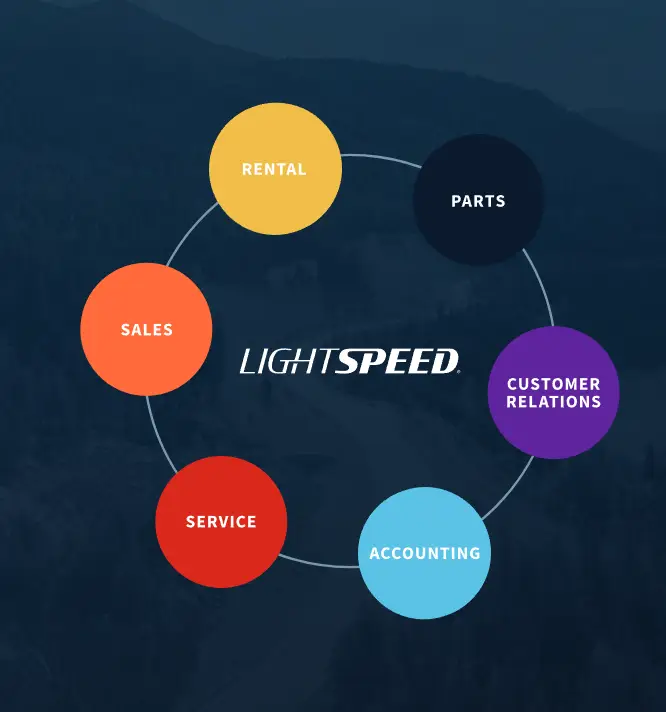In the car sales world, how well your dealership does isn’t just about the cars you sell. It’s also hugely about how happy your customers are. Picture yourself running a dealership where what customers think really shapes how great you can become. You already know that CSI Car Dealership Tracking and Performance Reporting aren’t just another tool—they’re the lifeblood of your business. It gives you insights that are as precious as the cars you sell.
By diving deep into your CSI scores, you’re not just seeing where you need to get better; you’re also building customer loyalty and pushing your dealership to the top. But getting really good at using these insights is full of important steps and game-changing strategies.
Why CSI Scores Matter
Understanding and acting on your CSI scores is key to making your customers happier and keeping them coming back. It’s like getting a report card that shows what you’re doing well and where you can do better. When customers are happy, they’re more likely to stick with you and tell their friends about their great experience. This word-of-mouth can be golden for your dealership because happy customers are your best ads.
Mastering CSI Insights
Getting the most out of your CSI scores means really listening to what your customers are saying. It’s about taking their feedback and turning it into action. Maybe it’s improving your waiting area or speeding up your service times. Whatever it is, making those changes can make a big difference in how customers see your dealership.
Building Loyalty Through Action
When you use customer feedback to make your dealership better, you’re showing your customers that you value their opinions. This can make them feel more connected to your dealership and more likely to keep coming back. It’s about creating a cycle of positive experiences that make customers want to stick with you for the long haul.
Leading in Customer Satisfaction
By focusing on your CSI scores and making the right changes, you can set your dealership apart as a leader in customer satisfaction. It’s not just about selling cars; it’s about creating an experience that customers love and remember. And when you do that, you’re not just a dealership; you’re a trusted partner for your customers.
Key Takeaways
Improving Customer Satisfaction Index (CSI) scores is crucial for making customers extremely satisfied in the car dealership industry. By closely monitoring these scores and deeply understanding their implications, dealerships can proactively address customer needs and elevate their service quality.
Why is this important? A slight increase in your CSI score can significantly transform your dealership’s reputation, setting you apart from the competition. To excel, focus on implementing effective changes, providing comprehensive training to your team, and thoroughly grasping customer preferences.
The Importance of CSI Scores
CSI scores reflect customer satisfaction with your dealership, serving as direct feedback from your clients. By actively responding to these scores, you can significantly enhance customer satisfaction, which, in turn, boosts your business.
Strategies to Elevate Your CSI Score
- Engage and Adapt: Actively listen to customer feedback to identify what delights and frustrates them. Utilize this information to refine your services.
- Empower Your Team: Ensure every team member understands the value of customer satisfaction. Equip them with the skills to deliver outstanding service.
- Continuously Innovate: Always seek opportunities for improvement. Whether it’s introducing a new presentation method for vehicles or streamlining paperwork processes, minor enhancements can lead to major impacts.
Focusing on your CSI scores and leveraging them for continuous improvement can help you develop a dealership that not only excels in car sales but also in achieving customer loyalty. By prioritizing customer satisfaction and using it as a guide for advancements, your dealership can distinguish itself positively.
Understanding CSI Fundamentals

Boosting Customer Satisfaction in Car Dealerships
Understanding the Customer Satisfaction Index (CSI) is key to achieving success in the automotive sector. This important measure tells us how happy customers are with a car dealership’s products, services, and pricing. For those running a dealership, keeping an eye on your CSI scores is essential. These scores come from surveys filled out by customers after they buy a car or get it serviced. They show how satisfied people are and highlight areas where your team can learn and get better.
Why CSI Scores Matter
CSI scores give you a clear picture of how well your Service Advisors are doing and how your dealership is performing overall. It’s important to look at these scores in the right way. They shouldn’t be used to punish sales staff. Instead, they should help you see where you can make customers even happier. By using the feedback from CSI Tracking, you can make smart changes.
Adding tools like smart conversation tech and automating some processes can greatly improve how customers feel, making your CSI scores go up. A higher CSI doesn’t just mean people think your dealership is doing a good job; it also helps keep customers coming back. Keeping your focus on using these insights wisely will help you make better decisions and keep improving.
CSI Vs. CSAT Differences

Understanding the Difference Between CSI and CSAT in the Automotive Industry
When it comes to making sure customers are happy in the car buying world, knowing the difference between CSI (Customer Satisfaction Index) and CSAT (Customer Satisfaction) can really help a dealership shine. These two terms might sound similar, but they play unique roles in keeping customers smiling from the showroom to the service center.
Exploring CSI: The Big Picture
CSI gives dealerships a helicopter view of how satisfied customers are with their entire journey, from the moment they think about buying a car to driving off the lot and beyond. It’s like a report card that shows how well the dealership is doing in making the car buying experience a joy from start to finish. This broad perspective is vital because it helps dealers see the overall health of their customer relationships.
Zooming in on CSAT: The Specifics
On the flip side, CSAT zeroes in on specific moments that a customer has with the dealership. Think of it as a snapshot of how happy a customer is with a particular service or interaction. This could be anything from how well an email query was handled to the friendliness of the staff during a test drive. By focusing on these individual points, dealerships can gather detailed feedback and make quick fixes to keep their service top-notch.
Why It Matters
Understanding CSI and CSAT is more than just collecting scores. It’s about creating a strategy to make every car buyer’s experience the best it can be. For dealerships, this means using CSI to maintain a stellar overall experience while honing in on specific areas with CSAT to make sure every interaction is as good as it gets. This approach not only makes customers happy but also builds a reputation that can drive more business to the dealership.
In essence, while CSI gives you the big picture, CSAT helps you paint the details. Both are crucial for steering a successful path in the competitive automotive industry. So, whether it’s improving the greeting customers receive or streamlining the buying process, paying attention to these metrics can lead to happier customers and a healthier bottom line.
CSI Vs. CSAT Defined
Understanding CSI and CSAT in Automotive Customer Satisfaction
When we talk about keeping customers happy in the car dealership world, two key terms pop up: the Customer Service Index (CSI) and the Customer Satisfaction Score (CSAT). Both are crucial, but they do different jobs in helping dealerships understand and improve their service.
What is CSI?
CSI is a detailed way to measure how satisfied customers are throughout their journey of buying a car. It looks at everything from the initial greeting at the dealership to the service received after purchase. This index is like a report card for dealerships, showing them where they excel and where they need to step up their game. It’s all about long-term growth and making sure customers keep coming back.
And CSAT?
CSAT, on the other hand, is more straightforward. It usually involves asking customers one simple question to gauge how they feel about the service they received. Think of it as a quick check-in with customers to get their immediate reaction. It’s fast, easy, and gives dealerships a snapshot of customer feelings right away.
Understanding CSI vs. CSAT in the Automotive Industry
When we talk about tracking customer satisfaction in the car dealership world, two big terms pop up: CSI (Customer Satisfaction Index) and CSAT (Customer Satisfaction Score). They might seem like they do the same thing, but they’re pretty different in how they work. Let’s break down these methods to see which one might fit your dealership’s needs better.
CSI Scores: A Deep Dive into Customer Feedback
CSI scores go the extra mile by looking at a bunch of different factors that affect how happy you are with your car buying experience. Dealerships use these scores to see not just how they’re doing overall but also to pinpoint exactly where they can do better. Think of it as a detailed report card that covers everything from how friendly the sales team was to how well the car’s features were explained.
CSAT’s Quick Check
On the flip side, CSAT is all about getting a quick snapshot of how you’re feeling. It’s usually just one question that asks how satisfied you are with your experience. This simplicity makes it super easy for businesses, especially those focusing on digital performance, to get fast feedback. It’s like asking, “Hey, are you happy with us?” and getting an instant yes or no.
Choosing the Right Metric
So, which one should your dealership use? Well, it depends on what you’re looking for. If you want a thorough analysis that covers every step of the customer journey, CSI is your go-to. But if you’re after a quick way to see how you’re doing, CSAT has you covered. The goal is to make sure every customer leaves more than happy, aiming for that 151% satisfaction mark.
Impact on Dealerships
When we look into how CSI (Customer Satisfaction Index) and CSAT (Customer Satisfaction Score) impact car dealerships, we find that they play different but crucial roles in making customers happy and boosting business results. CSI digs deep into the customer’s journey from start to finish when buying a car. It gives us a clear picture of how people feel about their experience. If a dealership scores high on CSI, it means they’re doing a great job at making the buying process smooth and enjoyable for customers.
Digital Tools Boost Customer Experience
Using tech solutions like the Digital Dealership System can take customer service to the next level. This kind of tool makes the whole car buying journey better, from browsing to signing the papers. It’s not just about making a sale; it’s about creating a positive experience that customers will remember.
Another smart move for dealerships is to use performance tracking tools that display digital leaderboards. These tools help dealers see how well their teams are doing in real time. When employees know their performance is being tracked, they’re more likely to go the extra mile to make customers happy. This direct link between employee efforts and customer satisfaction is a game-changer. It makes sure that every interaction with a customer is an opportunity to impress and build loyalty.
Happy customers are likely to come back and even recommend the dealership to friends and family. For dealerships, this means better business and a stronger reputation in the competitive auto industry
Calculating Your CSI Score

Calculating Your Customer Satisfaction Index (CSI) Score: A Guide
To figure out your CSI score, it’s crucial to look closely at certain factors like product quality, customer service, and how much your products cost. When you check these areas and see how they each add to your score, you learn what you can do better at your dealership to boost your performance. Understanding your CSI score’s impact helps you make smart choices based on data, aiming to give your customers the best experience possible.
Why Your CSI Score Matters
Knowing your CSI score is like having a map that shows you where to improve your business. It’s all about making sure your customers leave happy and come back. Here’s why this score is a big deal:
- Quality Speaks Volumes: If your products are top-notch, people notice. It’s a direct way to show you care about what you sell.
- Service with a Smile: Good customer service is more than just being nice. It’s about solving problems, being there when needed, and making sure every customer feels valued.
- Price It Right: Nobody wants to feel like they paid too much. Competitive pricing keeps customers satisfied and coming back.
Improving Your Score: Steps to Take
Now that you know what goes into your CSI score, here are some steps to help you boost it:
- Check and Double-Check Quality: Always aim for the best in what you offer. It might mean checking your products more carefully or even finding new suppliers if needed.
- Train Your Team: Make sure everyone who works for you knows how important good service is. Regular training can keep everyone sharp and ready to help.
- Review Your Prices: Keep an eye on what others charge for similar products. If you can offer a better deal or add value in other ways, you’ll stand out.
Understanding CSI Metrics
Understanding the ins and outs of your Customer Satisfaction Index (CSI) score is key to enhancing customer happiness and boosting your dealership’s results. This score acts like a mirror, showing how your customers feel about their experience and highlighting what needs to get better. Here are ways you can make the most of CSI metrics:
- Get to know what your customers want by looking closely at survey feedback. These surveys ask about everything from the quality of your products to your service and prices. This step helps you see your business through your customers’ eyes.
- Make every customer interaction shine by using smart tools like conversation intelligence and automated call quality checks. This way, every chat or call helps increase customer satisfaction.
- Keep an eye on and enhance customer service by checking your CSI scores often. This helps you spot trends, boost the performance of your service advisors, and make tweaks where needed.
Knowing your CSI score and how to improve it is essential for making your customers happier and your dealership more successful. It’s all about understanding customer feedback, making the most of every interaction, and always looking for ways to get better.
Enhancing Dealership Performance
Understanding your dealership’s Customer Satisfaction Index (CSI) score is key to improving how happy your customers are and finding ways to perform better. When you look at the average scores from different areas, you get the information you need to make smart decisions. This can help you sell more cars and make your service department more efficient.
Using conversation intelligence, an essential part of today’s Dealership Systems can really make your customer service stand out. This method is all about using data to make things better without having to punish employees. Instead, you can use insights from the Card Report from Digital and automated calls to help with training and making your processes better.
Keeping your focus on making customers happy lets you keep improving your business, making sure you not only meet but also beat what your customers expect.
Making the Most of Customer Conversations
Using conversation intelligence means you’re listening to what your customers are saying in a smart way. It’s like having a superpower that lets you understand exactly what your customers need and how your team can provide it. This isn’t about spying on calls but about learning from them. Every chat or call with a customer is a chance to get better.
Why CSI Scores Matter
Your dealership’s CSI score tells you a lot about how customers see you. A high score means happy customers and happy customers mean good business. It’s not just a number; it’s a reflection of your hard work. Paying attention to these scores helps you see where you’re doing great and where you can do better.
Empowering Your Team Through Data
Data is your best friend when it comes to improving your dealership. It gives you clear signs of where things are going well and where they’re not. With the right tools, like the Card Report and automated call checks, you can make your team stronger. Training becomes more about growing skills than just pointing out mistakes.
Interpreting Score Impact
Boost Your Dealership’s Performance with Smart CSI Score Strategies
Exploring how CSI scores and conversation intelligence can boost your dealership’s success, let’s dive into how you can calculate your CSI score and see its influence on customer happiness. This deep dive into technology unveils how crucial tech is in shaping customer experiences and lifting customer satisfaction.
- Tech’s Big Role: Using AI tools like Invoca helps with smarter call routing and analyzing customer talks.
- Digital Dealership Trends: Shows how using smart tools and chatting smartly helps get better CSI scores.
- The Advisor’s Edge: Service advisors who can explain things well play a big role in getting better scores.
This approach gives us a clear, fact-based view of why using tech in customer service is key to understanding and boosting CSI scores.
Simple Tips for a Better CSI Score
- Tech Makes a Difference: AI tools make it easier to direct calls and understand what customers are saying. This means customers spend less time waiting and more time getting their issues solved. Happy customers often lead to better reviews.
- What’s New in Dealerships: Reports show that when dealerships use new tech to handle customer chats and calls, they usually see their CSI scores go up. It’s all about making things smoother and faster for the customer.
- Advisors Who Talk Well Win: A service advisor who can clearly explain what’s going on with a customer’s car can make a big difference. When customers feel informed and respected, they’re more likely to leave positive feedback.
Understanding the power of technology in customer service is not just about keeping up with trends. It’s about making real changes that improve customer satisfaction and, as a result, boost your dealership’s rating and reputation.
Proper CSI Utilization

How to Boost Your Dealership’s Performance with Customer Satisfaction Scores
Customer Satisfaction Index (CSI) scores are a crucial element in the automotive industry, helping to measure how happy customers are with a dealership’s service. Understanding and using these scores effectively can lead to significant improvements in how a dealership operates.
Why CSI Scores Matter
CSI scores are more than just numbers. They give you a clear picture of what customers think about your service. This feedback is valuable because it shows where you’re doing well and where there’s room for improvement. By paying attention to these scores, you can make changes that matter to your customers, keeping your dealership ahead of the competition.
Turning Scores into Action
- Identify Training Needs: Sometimes, low CSI scores point to areas where your team could benefit from more training. This could be in customer service, product knowledge, or technical skills. Investing in your team’s growth not only boosts their confidence but also enhances the customer experience.
- Improve Processes: CSI scores can also highlight which dealership processes aren’t working as smoothly as they should. Maybe it takes too long for customers to complete a purchase, or communication could be clearer. By fixing these issues, you make dealing with your dealership easier and more pleasant for customers.
- Use Technology Wisely: Integrating technology with CSI monitoring can be a game-changer. Tools that track customer interactions and feedback help you stay on top of what customers want and expect. This proactive approach ensures you’re always ready to serve them better.
- Empower Your Team: Sharing insights from CSI scores with your team helps everyone understand what’s at stake. It’s not about pointing fingers but about working together to improve. When the whole team knows the goals, they can unite to provide top-notch service that customers will remember and appreciate.
Improving Scores With Intelligence

Boost Your Dealership’s Customer Satisfaction with Smart Tech
Exploring how customer satisfaction scores can skyrocket, it’s exciting to see how smart technologies like AI-driven chat analysis can make your car dealership stand out. Through careful study and engaging with people, we see that tech is changing the car world in cool ways, challenging old methods. Tech writing has become more lively, attracting many readers, especially those interested in how technology shapes policies.
Here are some top tips to boost your Customer Satisfaction Index (CSI) scores:
- Tap into AI for Smarter Chats: This tech not only makes customers happier but also helps you serve them better based on solid data.
- Go for Automated Call Checks: Making sure every call meets high standards can really lift your dealership’s CSI scores.
- Use Digital Scoreboards for Instant Feedback: These tools help compare performance with goals, creating a fun yet productive vibe among your sales team.
By embracing these cutting-edge technologies, you’re not just improving customer service; you’re also staying ahead in the competitive car industry.
Let’s break down why these strategies matter:
- Why Smart Chats Matter: Using AI helps understand what your customers need and expect. It’s like having a superpower that guides you to serve them better.
- The Magic of Call Checks: Consistency is key. Making every customer interaction awesome helps build trust and loyalty, pushing those satisfaction scores up.
- The Power of Instant Feedback: When your team can see how they’re doing in real time, it motivates them to do better. It’s a win-win for everyone, including your customers.
Training and Monitoring Strategies

Implementing smart training and close monitoring is key to improving your dealership’s performance and making your customers happier. It’s important to teach your team how to explain complicated tech ideas in a simple and engaging way. This method helps customers trust and feel satisfied with your dealership, especially in an industry where technical terms are common.
| Strategy Type | Key Features |
|---|---|
| Training | Knowing products well, training in customer service, using tech in training |
| Monitoring | Using secret shoppers, checking staff performance, getting customer opinions |
Using secret shoppers and listening to what customers say about your service helps you think deeply about the quality of service you’re providing. Having regular checks on how your staff are doing and giving them coaching helps make sure they keep making customers happy. Talking to experts who often give talks at conferences can give your dealership a leading edge in tech and customer service.
Why Good Training and Monitoring Matter
Training your team well means they know the products inside out and how to make customers feel valued. This is not just about teaching them facts but also about how to connect with customers using technology. For example, using tablets or apps to show features or explain services in a more interactive way can make a big difference.
Monitoring how your team does through different methods like secret shoppers or asking customers directly for their opinions offers direct insights into how your dealership is doing. This isn’t just about catching mistakes but also about celebrating when things go right and learning from feedback.
Bringing in thoughts from industry leaders adds value, too. It shows your team and customers that you’re serious about staying ahead in technology and customer service. It’s one thing to say you’re committed to excellence, but showing that commitment by learning from the best adds a whole new level of credibility.
Insights From Customer Preferences

How Customer Preferences Shape the Auto Dealership Industry
Understanding what your customers like and want is key to making your car dealership stand out. When you pay attention to your customers’ choices, you can make sure your car lot has the cars they’re looking for, your ads speak their language, and your service center meets their needs. This way, your dealership doesn’t just sell cars; it becomes a trusted name for buyers. Keeping customers happy also shows the auto industry the value of listening and changing based on what people want.
Inventory That Matches Customer Wishes
Keeping the right cars on your lot is all about knowing what your customers are after. If they’re into eco-friendly vehicles, make sure you’ve got those. If they prefer sports cars, stock up on those. This smart stocking helps customers find what they want fast and keeps them coming back.
Ads That Speak to Customers
Your ads should talk about what matters to your customers. If they’re into the latest tech features in cars, highlight these in your ads. This way, your marketing feels personal and grabs the attention of people who are likely to buy from you.
Service Centers People Love
When your service center knows what customers expect, it can offer the kinds of repairs and maintenance that make people happy. This could mean quicker oil changes, better waiting areas, or more transparent pricing. Happy customers are likely to spread the word and come back for their next car, too.
Paying attention to what your customers like and want is a game-changer for car dealerships. It helps you stock the right cars, create ads that get noticed, and offer services that keep customers happy. This approach not only boosts sales but also makes your dealership a leader in customer satisfaction.
Conclusion
Getting really good at understanding and improving Customer Satisfaction Index (CSI) scores is like finding the secret to making customers super happy in the car sales world. When you keep a close eye on these scores and think hard about what they mean, you’re not just fixing problems based on what people tell you. You’re actually getting ahead of the game. You’re figuring out what customers want before they have to ask for it and making your services the best they can be.
Why does this matter? Well, even a small jump in your CSI score can make a huge difference. It can turn your dealership from just okay to top-notch.
Frequently Asked Questions
What Is CSI in a Dealership?
When you buy a car or get it serviced at a dealership, you’re likely to encounter the term CSI. This stands for Customer Satisfaction Index, and it’s a key measure of how pleased you are with your experience. But CSI isn’t just about whether the car meets your expectations. It delves into the quality of the product, the level of customer service you received, and whether you felt you got good value for your money.
What Is CSI Performance?
When you’re in the business of selling cars, making sure your customers are happy is key. CSI performance stands for Customer Satisfaction Indicator performance. It’s all about looking closely at how satisfied customers are with the quality of your products, the service they receive, and the value they get. This isn’t just about asking customers how they feel. It involves collecting their responses through surveys and analyzing the results to see how well you’re doing.
What Is CSI in Customer Service?
CSI stands for Customer Satisfaction Index. It’s a vital measure used mainly in the car industry. It helps understand how happy customers are with what they bought, the service they received, and the price they paid. Think of it as a report card that shows how well a business is doing in making its customers happy. It combines scores from different areas of satisfaction to give a clear picture of what’s working well and what’s not.
What Is a CSI Rating?
Understanding the CSI Rating for Car Dealerships
What is a CSI Rating?
Ever wondered how car dealerships are evaluated for their service? Enter the CSI rating: a critical measure of customer satisfaction. It acts as a report card, assessing various factors such as service quality, pricing, and the products offered by the dealership. This rating goes beyond just assigning a score; it involves a thorough analysis based on customer surveys conducted after sales or services have been provided. The purpose is to highlight areas that need improvement rather than just commending what’s already good. Essentially, it’s the heartbeat of customer satisfaction in the automotive world.



